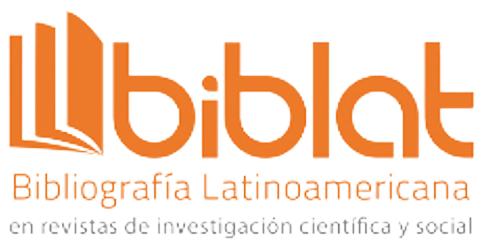Modelo de Autentificación de Doble Factor
Resumen
El presente artículo tiene como objetivo principal el desarrollo de un modelo que permita la autentificación de un usuario para el control de accesos mediante el modelo de Autentificación de doble factor. Para el desarrollo de dicho modelo presentamos un esquema seguro de autentificación de dos factores(TFA) basado en la posesión por el usuario de una contraseña y un dispositivo con capacidad criptográfica. La seguridad de este modelo es de extremo a extremo en el sentido de que el que quiera acceder de una manera fraudulenta se le va a complicar y asi garantizar la seguridad del usuario de dicho sistema, se tuvo como algoritmo Redes criptográficas, el cual es un modelo de doble autentificación. Así mismo se utilizó el lenguaje de programación cakephp 4.0, además de utilizar el programa visual studio code para poder realizar los algoritmos requeridos para que funciones el modelo de doble autentificación.
Descargas
Citas
"Facial Expression Recognition Using Machine Learning Techniques", International Journal of Advance Engineering and Research Development, vol. 1, n.º 06, junio de 2020. Accedido el 17 de noviembre de 2022. [En línea]. Disponible: https://doi.org/10.21090/ijaerd.010633 DOI: https://doi.org/10.21090/IJAERD.010633
FIDO Universal 2nd Factor. https://www.yubico.com/
Shirvanian, M., Jarecki, S., Saxena, N., Nathan, N.: Two-factor authentication resilient to server compromise using mix-bandwidth devices. In: Network & Distributed System Security Symposium (2014) DOI: https://doi.org/10.14722/ndss.2014.23167
Google Authenticator Android app. https://goo.gl/Q4LU7k
"OpenCV: OpenCV modules". OpenCV documentation index. https://docs.opencv.org/4.x/ (accedido el 17 de noviembre de 2022).
S. Nagaraju and L. Parthiban, “Trusted framework for onlinebanking in public cloud using multi-factor authentication and privacy protection gateway,” Journal of Cloud Computing, vol. 4, no. 1, pp. 1–23, 2015. DOI: https://doi.org/10.1186/s13677-015-0046-4
M. Olalere, M. Taufik Abdullah, R. Mahmod, and A. Abdullah, “Bring your own device: security challenges and
A theoretical framework for two-factor Authentication,” Inaternational Journal of Computer Networks and Communications Security, vol. 4, no. 1, pp. 21–32, 2016, http://www.ijcncs.org.
O. Niel y P. Bastard, "Artificial Intelligence in Nephrology: Core Concepts, Clinical Applications, and Perspectives", American Journal of Kidney Diseases, vol. 74, n.º 6, pp. 803–810, diciembre de 2019. Accedido el 17 de noviembre de 2022. [En línea]. Disponible: https://doi.org/10.1053/j.ajkd.2019.05.020 DOI: https://doi.org/10.1053/j.ajkd.2019.05.020
T. Walsh, "The troubling future for facial recognition software", Communications of the ACM, vol. 65, n.º 3, pp. 35–36, marzo de 2022. Accedido el 15 de noviembre de 2022. [En línea]. Disponible: https://doi.org/10.1145/3474096 DOI: https://doi.org/10.1145/3474096
TOTP: Time-Based One-Time Password Algorithm. https://goo.gl/9Ba5hv
S. Latifi, Ed., 17th International Conference on Information Technology–New Generations (ITNG 2020). Cham: Springer International Publishing, 2020. Accedido el 17 de noviembre de 2022. [En línea]. Disponible: https://doi.org/10.1007/978-3-030-43020-7 DOI: https://doi.org/10.1007/978-3-030-43020-7
S. K. Shammi, S. Sultana, M. S. Islam y A. Chakrabarty, "Low Latency Image Processing of Transportation System Using Parallel Processing co-incident Multithreading (PPcM)", en 2018 Joint 7th International Conference on Informatics, Electronics & Vision (ICIEV) and 2018 2nd International Conference on Imaging, Vision & Pattern Recognition (icIVPR), Kitakyushu, Japan, 25–29 de junio de 2018. IEEE, 2018. Accedido el 17 de noviembre de 2022. [En línea]. Disponible: https://doi.org/10.1109/iciev.2018.8640957 DOI: https://doi.org/10.1109/ICIEV.2018.8640957
Kaur, S., Kaur, G., & Shabaz, M. (2022). A Secure Two-Factor Authentication Framework in Cloud Computing. Security and Communication Networks, 2022. https://doi.org/10.1155/2022/7540891
RFC 4226 HOTP: An HMAC-based One-Time Password Algorithm (2005). https://goo.gl/wxHBvT
I. Sluganovic, M. Roeschlin, K. B. Rasmussen y I. Martinovic, "Analysis of Reflexive Eye Movements for Fast Replay-Resistant Biometric Authentication", ACM Transactions on Privacy and Security, vol. 22, n.º 1, pp. 1–30, enero de 2019. Accedido el 17 de noviembre de 2022. [En línea]. Disponible: https://doi.org/10.1145/3281745 DOI: https://doi.org/10.1145/3281745
L. Monastyrskii, V. Lozynskii, Y. Boyko y B. Sokolovskii, "Fingerprint recognition in inexpensive biometric system", Electronics and Information Technologies, vol. 9, 2018. Accedido el 17 de noviembre de 2022. [En línea]. Disponible: https://doi.org/10.30970/eli.9.120 DOI: https://doi.org/10.30970/eli.9.120
A. Ometov, S. Bezzateev, N. Makitalo, S. Andreev, ¨T. Mikkonen, and Y. Koucheryavy, “Multi-factor authentication: a survey,” Cryptography, vol. 2, no. 1, pp. 1–31, 2018 DOI: https://doi.org/10.3390/cryptography2010001
H. AYDIN, "The Importance of Cyber Security in Management Information Systems (MIS)", Bilgisayar Bilimleri ve Teknolojileri Dergisi, octubre de 2022. Accedido el 17 de noviembre de 2022. [En línea]. Disponible: https://doi.org/10.54047/bibted.1138252 DOI: https://doi.org/10.54047/bibted.1138252
M. Meroni, F. Waldner, L. Seguini, H. Kerdiles y F. Rembold, "Yield forecasting with machine learning and small data: What gains for grains?", Agricultural and Forest Meteorology, vol. 308-309, p. 108555, octubre de 2021. Accedido el 17 de noviembre de 2022. [En línea]. Disponible: https://doi.org/10.1016/j.agrformet.2021.108555 DOI: https://doi.org/10.1016/j.agrformet.2021.108555
M. S. Bouzakraoui, A. Sadiq y A. Y. Alaoui, "Customer Satisfaction Recognition Based on Facial Expression and Machine Learning Techniques", Advances in Science, Technology and Engineering Systems Journal, vol. 5, n.º 4, p. 594, agosto de 2020. Accedido el 17 de noviembre de 2022. [En línea]. Disponible: https://doi.org/10.25046/aj050470 DOI: https://doi.org/10.25046/aj050470
A. Bazaga, N. Gunwant y G. Micklem, "Translating synthetic natural language to database queries with a polyglot deep learning framework", Scientific Reports, vol. 11, n.º 1, septiembre de 2021. Accedido el 17 de noviembre de 2022. [En línea]. Disponible: https://doi.org/10.1038/s41598-021-98019-3 DOI: https://doi.org/10.1038/s41598-021-98019-3
B. Liu et al., "Unsupervised Deep Learning for Random Noise Attenuation of Seismic Data", IEEE Geoscience and Remote Sensing Letters, pp. 1–5, 2021. Accedido el 17 de noviembre de 2022. [En línea]. Disponible: https://doi.org/10.1109/lgrs.2021.3057631 DOI: https://doi.org/10.1109/LGRS.2021.3057631
J. Han, E. Shihab, Z. Wan, S. Deng y X. Xia, "What do Programmers Discuss about Deep Learning Frameworks", Empirical Software Engineering, vol. 25, n.º 4, pp. 2694–2747, abril de 2020. Accedido el 17 de noviembre de 2022. [En línea]. Disponible: https://doi.org/10.1007/s10664-020-09819-6 DOI: https://doi.org/10.1007/s10664-020-09819-6
Kaur, S., Kaur, G., & Shabaz, M. (2022). A Secure Two-Factor Authentication Framework in Cloud Computing. Security and Communication Networks, 2022. https://doi.org/10.1155/2022/7540891 DOI: https://doi.org/10.1155/2022/7540891
Derechos de autor 2023 Innovación y Software

Esta obra está bajo licencia internacional Creative Commons Reconocimiento 4.0.
Los autores ceden en exclusiva el derecho de publicación de su artículo a la Revista Innovación y Software, que podrá editar o modificar formalmente el texto aprobado para cumplir con las normas editoriales propias y con los estándares gramaticales universales, antes de su publicación; asimismo, nuestra revista podrá traducir los manuscritos aprobados a cuantos idiomas considere necesario y difundirlos en varios países, dándole siempre el reconocimiento público al autor o autores de la investigación.
























